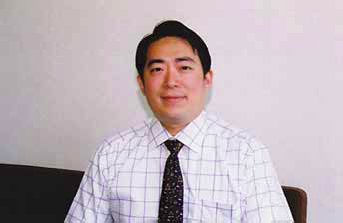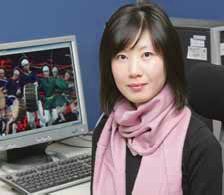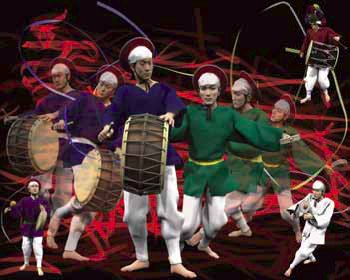●Interview
Alumni Activities
|
Interview with the recipient of the Federation of Overseas Chinese Associations (FOCA) Overseas Distinguished Young Person's Award
Po-Sheng Wu, having completed his Ph.D. course at the Graduate School of Bioresource and Bioenvironmental Sciences in March 2003, is currently employed in the New Product Development Department of Otsuka Pharmaceutical Co., Ltd. Wu was the recipient of this year's Taiwan FOCA Overseas Distinguished Young Person's Award. - Congratulations on being awarded the FOCA Overseas Distinguished Young Person's Award! Please tell us a little about your impressions at that time. Wu:When I was contacted about the award, I was very surprised. - Mr. Wu, what type of research did you do during your student days? Please tell us something about that, as well as some of your memories of that time. Wu:I graduated from National Taiwan Ocean University in July 1995 and worked as a teacher in Taiwan. In April 1998, I joined the postgraduate course at the Graduate School of Bioresource and Bioenvironmental Sciences at Kyushu University. After acceptance onto the doctorate course, I carried out analyses of physiologically active substances in food and research related to its evaluation. I completed my doctorate in March 2003. In fact, my father was a graduate of Kyushu University's Faculty of Agriculture as well. So two generations of our family have studied at the university. - Listening to you speak makes me feel that your student days at Kyushu University were very enjoyable. Please tell us a little about your present job and your ambitions for the future. Wu:At the company where I work now, I carry out development of health products by making use of the research that I did in Kyushu University. We talk about "health food products" as if there is only one type, but there are actually quite a lot. - And finally, do you have any comments to share with the exchange students at Kyushu University? Wu:I advise international students from around the world to undertake exchange activities such as teaching people about their country's food and I hope that you will make positive efforts to meet Japanese students and local residents. Through these experiences and exchange activities you can learn many things, as I did, which I'm sure will be helpful for you in the future.
|
●Interview
Student Activities
|
"EUROGRAPHICS 2005" CG Grand Prix Winner Best Student Entry
- Ms. Choi, I would like to congratulate you on winning two awards, the Grand Prix and Best Student Entry, at EUROGRAPHICS 2005. Could you please tell me what made you decide to study CG at the Kyushu University School of Design? Choi :When I first decided to come to Japan, I simply wanted to study computer graphics to make "things," such as televisions and refrigerators, that I was designing at university in Korea. Professor Genda (P5) is well-known in Korea as well, which is why I chose to come here. - What were your reasons for adopting the theme of "SAMULNORI," the traditional Korean dance, for your work? Choi :The first time I saw CG created movement of people and of nudes, I thought it was quite interesting. I was also interested in the theme of "digital archives," which is a method of recording that can replace voice and images. I wanted to make something Korean a theme of this work so that I could let people know a little bit about the culture of my country. - Did you have any problems during production? Choi :Although SAMULNORI is a familiar dance to most Koreans, I had never learned it. So, before I could reproduce the movement faithfully in CG, I had to first learn the dance. - Tell us about the work you did using the latest equipment, such as three-dimensional digitizers. Choi :The hardest thing to do was to match the movement of the person's body to the movement of the ribbon. - With all that effort, this work won the Grand Prix. How did that make you feel? Choi :First, the Grand Prix was presented at the awards ceremony. I thought that the ceremony was over, but then I heard that we had won another award, the Best Student Entry. I was surprised! I couldn't believe that we had won two awards. But, we were nominated for three awards in four categories, so I was a little disappointed for a moment that we didn't win one more award. - Finally, would you say a few words to some of the younger students who have the same objectives and desires and those who are now considering their future? Choi :To record a work like SAMULNORI in a digital archive is an experience that even the SAMULNORI specialists have not done to date. Reproducing movement that could be approved by the specialists required very careful work, but this type of digital archive is a field that is still unknown and will develop more in the future. This is where the charm of the digital industry lies.
|
Previous PageTop Next



